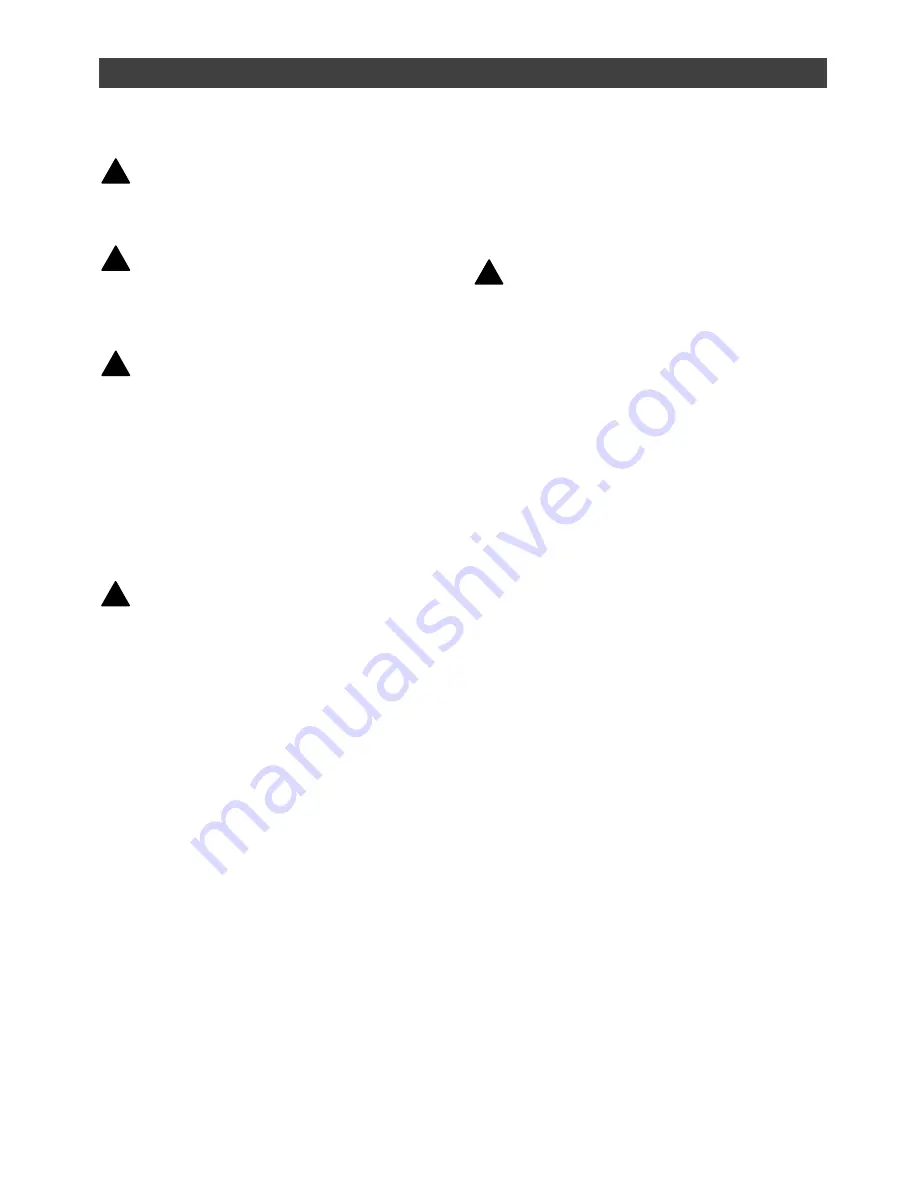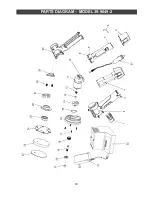
15
GENERAL
WARNING:
Always remove the
battery from the tool while before
performing any servicing.
WARNING:
When servicing, use
only identical SIMONIZ
®
parts. Use of
any other part may create a hazard or
cause product damage.
WARNING:
Do not at any time
allow brake fluids, gasoline, petroleum-
based products, penetrating oils, etc. to
come in contact with plastic parts. They
contain chemicals that can damage,
weaken or destroy plastic.
DO NOT abuse power tools. Abusive
practices can damage the tool as well as
the workpiece.
WARNING:
DO NOT attempt to
modify this polisher/sander or create
accessories not recommended for this
tool. Any such alteration or modification
is misuse and could result in a
hazardous condition leading to possible
serious injury. It will also void the
warranty.
LUBRICATION
All of the bearings in this tool are lubricated
with a sufficient amount of high grade
lubricant for the life of the unit under normal
conditions. Therefore, no further lubrication
is required.
CLEANING THE SANDER/POLISHER
Clean the exterior of the tool with a soft
damp cloth.
NEVER
use commercial
solvents when cleaning the tool because
they can cause damage to plastic parts.
WARNING:
Never immerse the tool
in water. Remove the foam pads and
clean them separately.
CARE OF ACCESSORIES
The foam and micro fibre pads are
washable and reusable. Simply remove
them from the tool and wash them in warm
water with a mild detergent. Rinse
thoroughly in clear warm water.
NOTE:
Allow pads to air dry. Do not force
dry them in a clothes dryer. The dryer will
damage the pad material.
When storing the tool, remove the foam
pads to prevent compression and distortion
of the foam.
REPLACING MOUNTING BASE
It may be necessary to replace the
mounting base due to continual exposure
to dust and debris. The following procedure
will demonstrate how to remove the
mounting base from the tool.
NOTE:
There are two gear housing screws
to be removed.
1. Remove accessory pad or sanding
disk from the base.
2. Insert a #1 Phillips
®
screwdriver (1)
through the hole in the bottom of the
base (2) (see Fig. 12).
!
!
!
MAINTENANCE
!
!






































